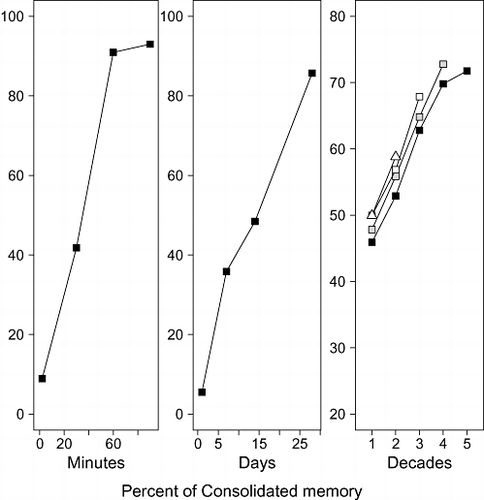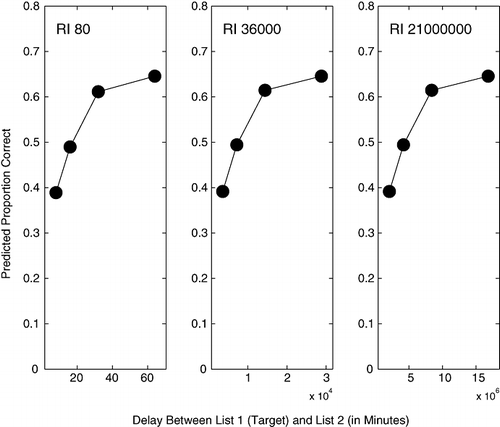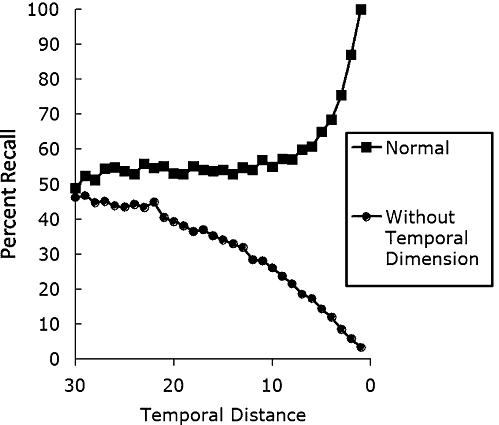Figures & data
Figure 1 Consolidation at three timescales, ranging from minutes (left‐hand panel) to days (centre panel) and years (right‐hand panel). The left panel shows data from CitationAgranoff et al. (1966), replotted as a percentage of consolidated memory following CitationDudai (2004). In the experiment, goldfish learned to escape an electric shock in a shuttle‐box tank. A protein synthesis inhibitor was administered to separate groups of fish at the times after the training shown on the abscissa. Consolidation appeared complete after 1-hr, that is, the drug did not impair performance relative to a no‐treatment control. The centre panel shows data from a fear‐condition experiment by CitationKim and Fanselow (1992), also re‐expressed as a percentage of consolidated memory. Rats were fear‐conditioned via electric shock before their hippocampus was lesioned at the time shown on the abscissa after training. The longer the lesion was delayed, the less it impaired performance, suggesting that memory for the fear‐invoking stimulus had become increasingly consolidated. The right‐hand panel shows data from CitationA. S. Brown (2002, Figure-1) that reflect performance of amnesic patients as a percentage of the performance of matched control participants. See text for details.

Figure 2 Top panel shows the temporal structure of three conditions (a through c) to observe the temporal gradient of retroactive interference. See text for explanation. The bottom panel shows data from a representative experiment (CitationNewton & Wickens, 1956), and the arrows connect conditions to their corresponding outcome.

Figure 3 SIMPLE's predicted pattern of first‐list recall (L1 in Figure-2) for three retroactive interference experiments at three different timescales. The three panels correspond roughly to the same timescales as those observed in Figure-1. Across all panels, parameters were held constant at c = 6, t = 0.8, and s = 3. See text for further details.

Figure 4 Illustration of how a typical recency gradient (top line) may be transformed into temporally graded amnesia (bottom line) within SIMPLE if access to a temporal dimension is lost because of hippocampal damage. The simulation assumes that the attentional weight given to the temporal dimension during recall reduces as a linear function of the temporal distance of the to‐be‐retrieved memory, reflecting the notion that temporal discrimination is most useful for recent memories, whereas more distant memories are best retrieved on the basis of other information. See text for further details.
